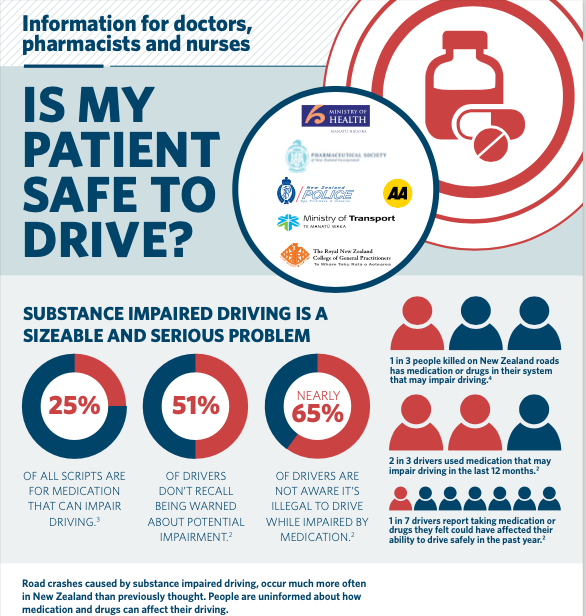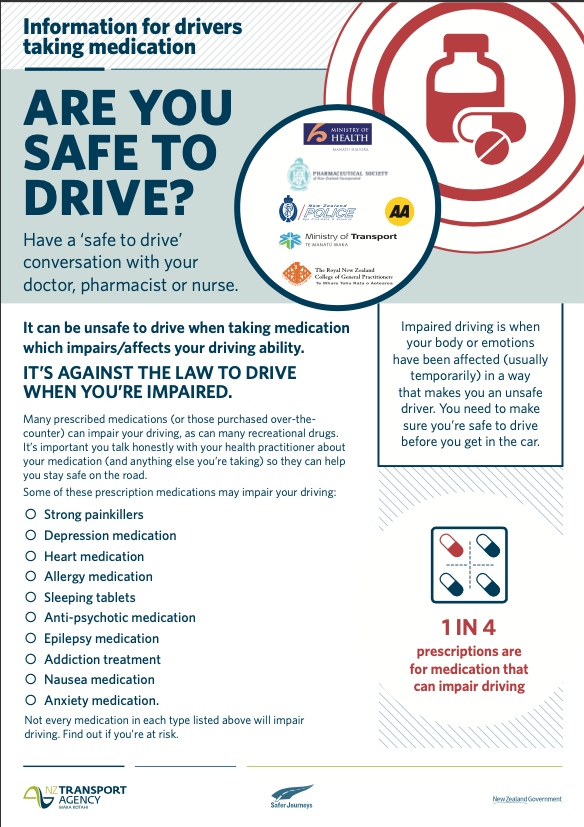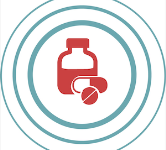2 hours
Options and plans
When supporting a person using medication with a risk of impairment, the health professional should first find out when and how much a person drives, if it is part of their employment and the potential impact on their everyday life if unable to drive.
Drivers should also be asked about alcohol and illicit drug use and their use of over the counter and herbal or traditional remedies. Medsafe data sheets contain information about whether other drugs affect the processing of prescription drugs through the body and therefore increase the risk of exaggerated adverse effects. If in doubt, a pharmacist should be consulted.
Discuss whether the effects are expected to be temporary at the initiation of drug therapy or ongoing. Not all people are impaired by their medications, so plan with the person to start a medication at a time that driving is not a factor to discover its impact and then review.
Based on this information, work with the person to identify alternative transport strategies. For the daily commute, public transport or friends and whānau may provide a good alternative. If driving is part of the person’s employment, a discussion with their employer about alternative duties, or even using sick leave might be necessary while the impact of the new medication is assessed.
If the impact is such that the person may avoid taking their medication, alternative therapies must be explored.
Further planning should include what the person should do in an emergency, knowing they cannot get behind the wheel – who can they turn to in this situation? If they become severely impaired while driving and acutely unwell, an ambulance should be called.
Conversations about MR SID should always be documented by the health professional.
Extensive experience with alcohol and driving shows that educating or informing drivers of risk may not be sufficient to change behaviours – deterrence is another essential element. It is important that drivers understand the legal implications of MR SID, and the testing and enforcement practices in place on NZ roads as deterrents.21
People need to know that the decision to drive is their responsibility and, even when their medication is taken as directed, if they drive impaired, they are still breaking the law. If they have been advised by a health professional not to drive while on medication, their car insurance may be affected if they do drive. Healthcare professionals are required to disclose to Waka Kotahi if they believe a person is a danger to themselves or others on the road and that despite advice, they believe the person is likely to continue to drive.12
Waka Kotahi has developed brochures for people at risk of MR SID for use during discussions with healthcare professionals. These are free to order.
The first is for health professionals

The second is a printable leaflet for the person to take away and can be filled in during the discussion so the person understands what medication is causing the risk of MR SID and which symptoms in particular they should watch for.






